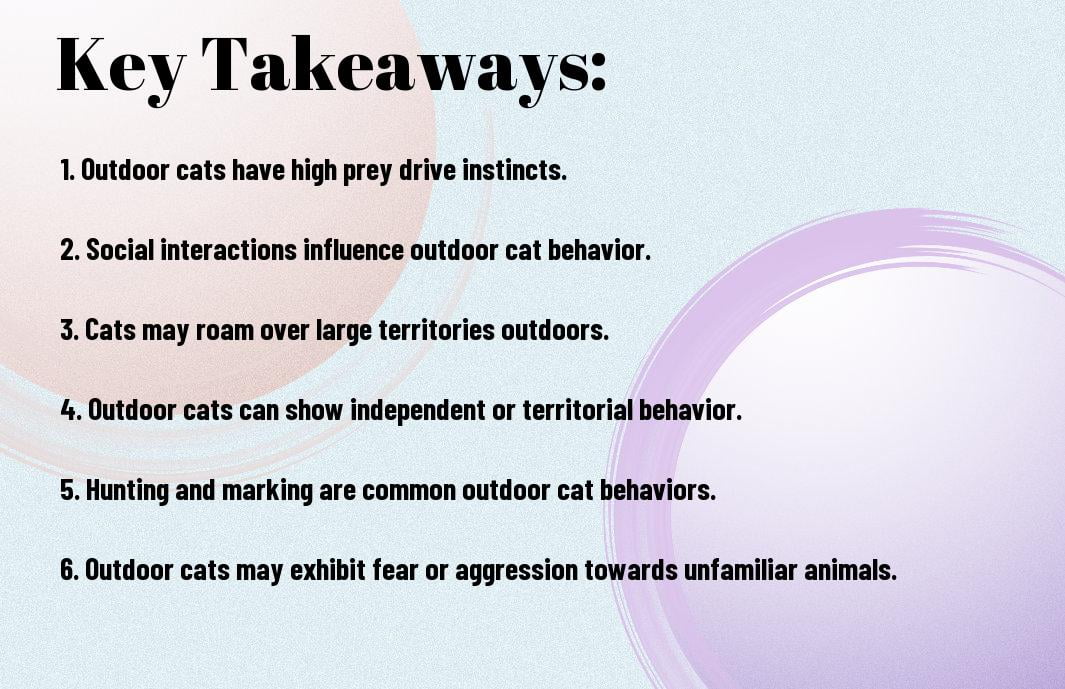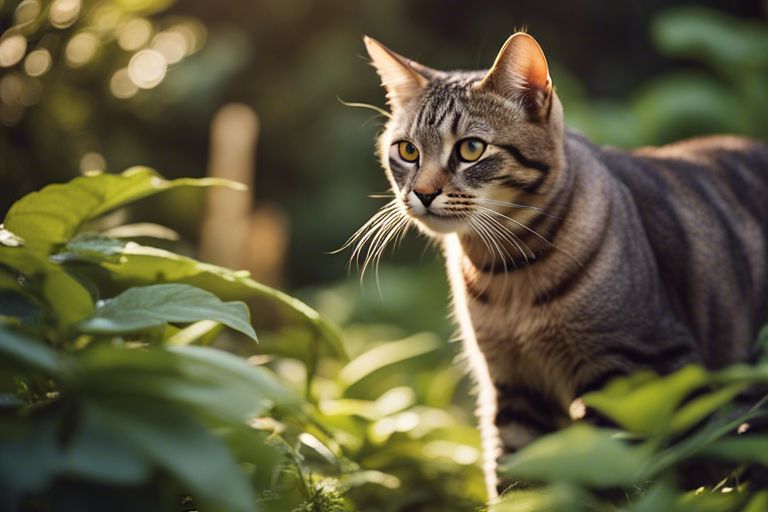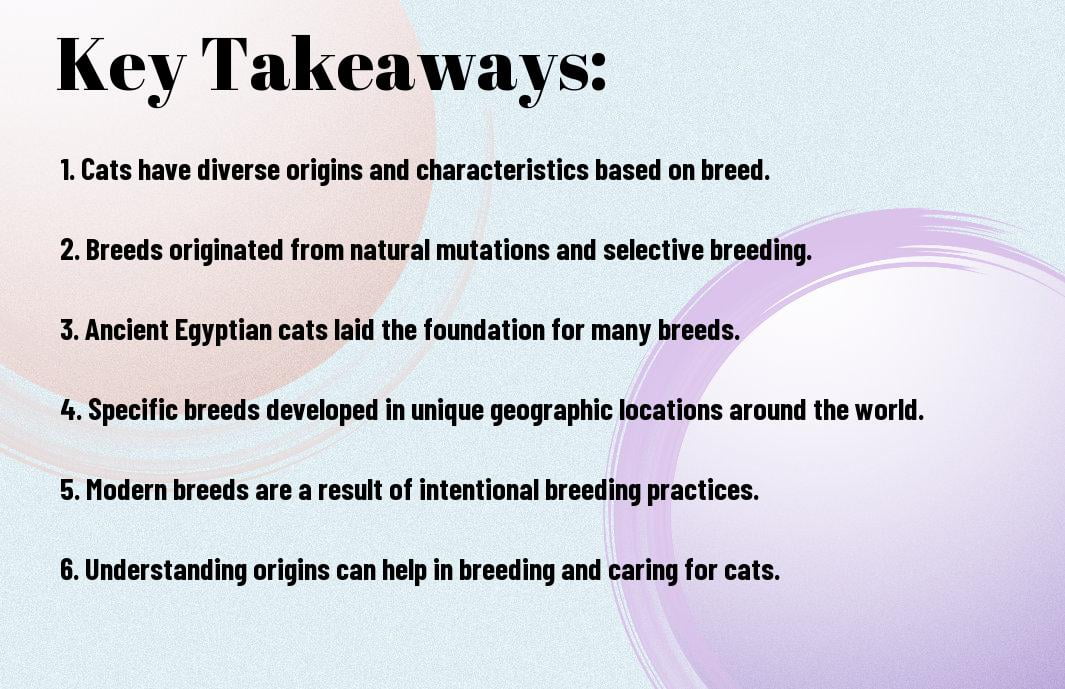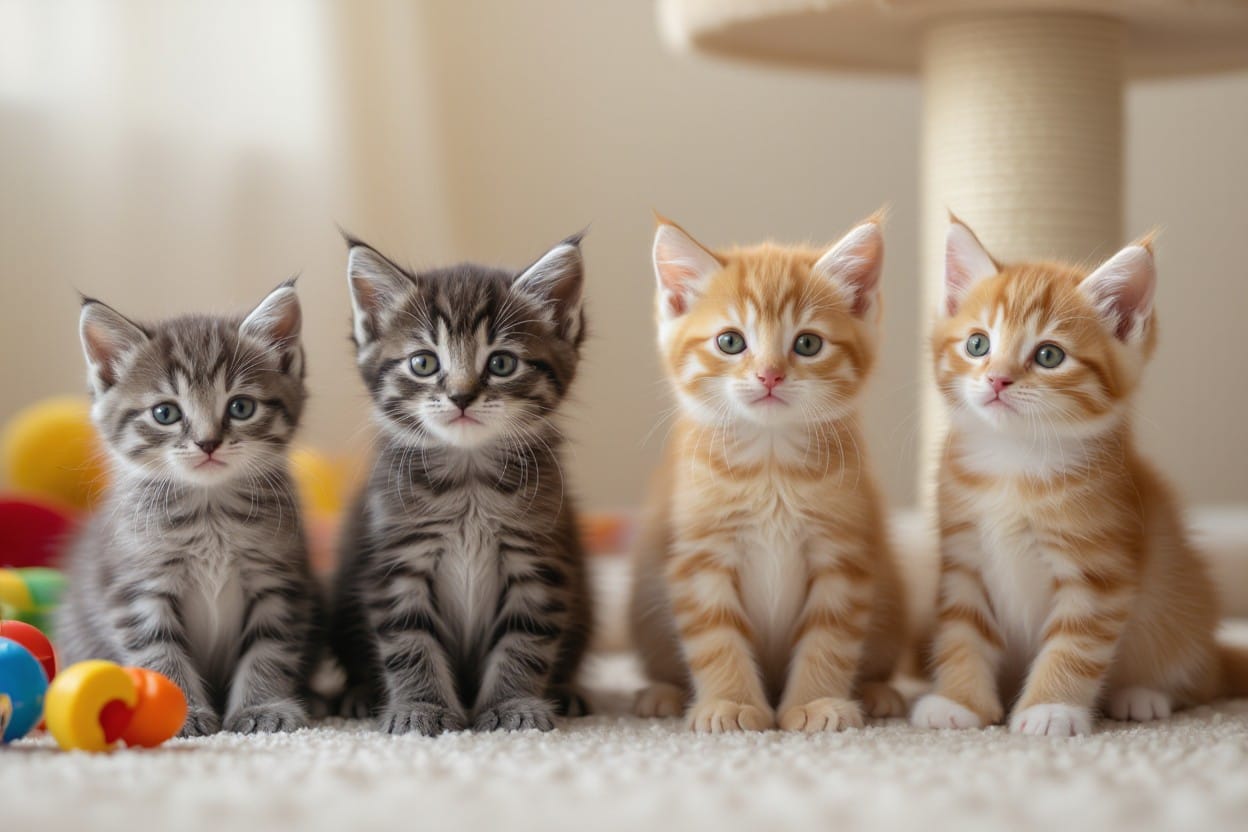Prey animals are known to display specific behaviors to survive in their environment, and outdoor cats are no exception. By observing and understanding the behaviors of outdoor cats, we can gain insight into their natural instincts and preferences. From hunting patterns to territory marking, outdoor cats exhibit a range of behaviors that are vital for their survival and well-being.

The Natural History of Felines
Evolution of Cat Behavior
History has shown us that the behavior of felines has evolved over thousands of years. Cats, originally wild animals, have adapted to various environments and developed behaviors that allow them to survive and thrive. From hunting techniques to social structures, the evolution of cat behavior is a fascinating subject that continues to be studied by scientists and animal behaviorists alike.
Diversity of Feline Species in the Wild
The natural world is home to a wide variety of feline species, each with its own unique characteristics and behaviors. From the agile cheetah of the African savannah to the elusive snow leopard of the Himalayas, feline species exhibit a diverse range of behaviors that have been shaped by their habitats and evolutionary history.
Species such as lions, tigers, leopards, and jaguars demonstrate different hunting techniques, social structures, and communication methods that have allowed them to become apex predators in their respective ecosystems. Understanding the diversity of feline species in the wild is crucial in appreciating the complexities of their behavior and the importance of their conservation.
Territory and Spatial Behavior
Even in the seemingly boundless expanse of the outdoors, domestic cats exhibit a keen awareness of territory and spatial boundaries. Understanding the territorial behaviors of outdoor cats sheds light on their survival instincts and interactions with the environment.
Territory Size and Usage
Spatial orientation is crucial for outdoor cats to establish and maintain their territories. The size of a cat’s territory can vary depending on factors such as food availability, presence of neighboring cats, and individual personality. While some cats may stake out large areas encompassing multiple properties, others may be content with a smaller, more confined territory.
Social Dynamics and Territory Sharing
One interesting aspect of outdoor cat behavior is their social dynamics when it comes to territory sharing. Cats are known to exhibit both solitary and social behaviors, leading to complex interactions among individuals within a shared environment. While some cats may engage in territorial disputes, others can establish harmonious relationships with their feline neighbors.
For instance, outdoor cats may engage in scent marking to demarcate their territories and communicate with other cats in the vicinity. This behavior helps establish boundaries and minimize conflicts between cats sharing the same space.

Hunting and Predatory Behaviors
Understanding the Prey Drive
For outdoor cats, the prey drive is a powerful instinct deeply rooted in their DNA. Cats are natural hunters, and this behavior is not only a means of survival but also a way to engage their physical and mental capabilities. Understanding the prey drive is vital in comprehending why outdoor cats exhibit hunting behavior even when well-fed. It’s important to acknowledge that hunting is a normal behavior for cats, and suppressing it entirely can lead to frustration and stress.
Methods and Patterns of Hunting
With their keen sense of sight, hearing, and smell, outdoor cats employ various methods and patterns when hunting. They are skilled stalkers, utilizing stealth and patience to approach their prey undetected. Cats are also known for their lightning-fast reflexes and agility, making them adept at pouncing on unsuspecting prey. These innate hunting techniques are honed through practice and observation, allowing cats to efficiently catch their intended target.
With their sharp retractable claws and teeth, cats are designed for capturing and killing prey. They often use a combination of tactics, such as swatting with their paws, biting the neck to deliver a lethal bite, or using their weight to immobilize larger prey. Cats may exhibit play-like behavior when stalking or pouncing, but it’s important to remember that these actions serve a purpose in perfecting their hunting skills.
Hunting
Hunting is not just a means of obtaining food for outdoor cats; it’s a complex behavior that fulfills their natural instincts and provides mental stimulation. By understanding the hunting and predatory behaviors of outdoor cats, we can better cater to their needs while also respecting their innate behaviors.
Communication and Social Interaction
Vocalizations and Body Language
Many outdoor cats rely on a combination of vocalizations and body language to communicate with one another and with humans. From purring to meowing, hissing, and chirping, each sound serves a specific purpose in the cat’s social interactions. Body language, such as tail position, ear movements, and eye contact, also plays a crucial role in conveying messages.
Social Structures Among Feral Cat Colonies
For feral cat colonies, social structures are crucial for survival and maintaining peace within the group. These colonies often consist of related individuals, where females form strong bonds with their offspring and other females. The hierarchy within a colony is usually determined by age, with older and more experienced cats taking on leadership roles.
The social structure of feral cat colonies also includes various territories that are marked through scent marking and other forms of communication. Each cat has a specific role to play within the colony, whether it is as a hunter, caretaker, or protector, to ensure the group’s overall well-being.
The Effect of Human Environments on Outdoor Cats
Adaptation to Urban and Suburban Areas
With the increasing urbanization of landscapes, outdoor cats have shown remarkable adaptability to living in close proximity to human environments. They have been observed utilizing human-made structures such as buildings, parks, and gardens as part of their territory. This adaptability is evident in their hunting behavior as well, with outdoor cats preying on small mammals and birds that are abundant in urban and suburban settings.
Conflicts and Coexistence with Humans
One of the key issues surrounding outdoor cats in human environments is the conflicts that may arise with human residents. While some people welcome the presence of outdoor cats for their pest-control abilities, others consider them a nuisance due to their hunting of wildlife and potential for spreading diseases. Finding a balance between the conservation of wildlife and the well-being of outdoor cats is a challenge that many communities face.
Suburban areas, in particular, present a unique set of challenges when it comes to outdoor cats. The mix of residential neighborhoods and natural habitats can create conflicts as outdoor cats navigate between hunting grounds and human settlements. Understanding and addressing these conflicts is imperative for promoting the coexistence of outdoor cats and humans in suburban environments.

Health and Wellness of Outdoor Cats
Unlike indoor cats, outdoor cats are exposed to a wide range of environmental factors that can impact their health and wellness. It is important for cat owners to be aware of the unique challenges that outdoor cats face and take proactive measures to ensure their well-being.
Common Health Issues and Their Prevention
Health issues commonly seen in outdoor cats include parasites, infections, and injuries from fights or accidents. To prevent these issues, it is necessary to keep your outdoor cat up to date on vaccinations, flea and tick prevention, and regular veterinary check-ups. Providing a balanced diet, fresh water, and shelter can also help support your outdoor cat’s overall health and immune system.
Impact of Outdoor Life on Feline Longevity
An outdoor lifestyle can have both positive and negative impacts on a cat’s longevity. While outdoor cats may have more opportunities for exercise and mental stimulation, they are also exposed to more risks and stressors that can shorten their lifespan. It is important for cat owners to weigh the benefits and risks of allowing their cat outdoors and take steps to minimize potential dangers.
Management and Welfare of Outdoor Cat Populations
Once again, it is important to address the management and welfare of outdoor cat populations to ensure the well-being of these animals and minimize their impact on the environment. Effective management strategies can help control population size and improve the overall health and quality of life for outdoor cats.
Strategies for Population Control
Populations of outdoor cats can be managed through various strategies, including Trap-Neuter-Return (TNR) programs. TNR involves trapping outdoor cats, spaying or neutering them to prevent further breeding, and then returning them to their original location. This approach has been shown to be effective in reducing cat populations over time and preventing the birth of unwanted kittens. Other methods of population control include adoption programs, outreach and education efforts, and the enforcement of local ordinances and regulations regarding outdoor cat care.
Ethical Considerations of Managing Outdoor Cats
Outdoor environments present unique ethical considerations when it comes to managing cat populations. While it is important to address issues such as overpopulation, disease transmission, and predation on wildlife, it is also crucial to consider the well-being and autonomy of individual cats. Balancing the needs of outdoor cats with the concerns of communities and ecosystems requires thoughtful and compassionate decision-making.
With outdoor cats, it is necessary to prioritize their welfare by providing access to food, water, shelter, and veterinary care. Additionally, efforts should be made to promote responsible ownership practices, such as identification and vaccination, to help safeguard both the cats and the environment they inhabit.
Final Words
Now that we have investigated into the various behaviors of outdoor cats, it is clear that they exhibit a range of instinctual actions influenced by their natural habitats. By understanding these behaviors, cat owners can better accommodate their feline friends and ensure their safety and well-being while outdoors. Providing enriching environments, supervising outdoor excursions, and implementing proper training can help mitigate potential risks and allow cats to express their innate behaviors in a safe and controlled manner.
Do not forget, outdoor cats are skilled hunters and explorers by nature, so it is crucial to be proactive in managing their outdoor adventures. With the right knowledge and strategies in place, cat owners can foster a harmonious relationship with their outdoor cats and enjoy the benefits of their independent spirits while keeping them safe from potential dangers in their outdoor environment.
FAQ
Q: What are outdoor cats behavior patterns?
A: Outdoor cats exhibit a variety of behaviors including hunting, territorial marking, and social interactions with other cats.
Q: How do outdoor cats communicate with each other?
A: Outdoor cats communicate through vocalizations such as meowing, purring, hissing, and growling, as well as body language and scent marking.
Q: Why do outdoor cats hunt wildlife?
A: Hunting is a natural behavior for cats, and outdoor cats may hunt wildlife to fulfill their instinctual prey drive or to supplement their diet.
Q: How can outdoor cat behavior be modified?
A: Outdoor cat behavior can be modified through enrichment activities, such as providing toys, scratching posts, and climbing structures, as well as spaying/neutering to reduce roaming and territorial behavior.
Q: What are the risks of allowing cats outdoors?
A: Outdoor cats face risks such as encounters with other animals, exposure to toxins, traffic accidents, and potential transmission of diseases. Keeping cats indoors or providing supervised outdoor time can help mitigate these risks.















